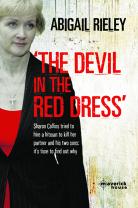Maybe it’s because I spend a large chunk of my working life writing about disastrous relationships but I’ve never been one for sugary romance. In fairness I was of a fairly cynical bent before I ever set foot in a courtroom but the last six years have not helped! The avalanche of cherubs, roses and all shades of pink that erupts so soon after Christmas these days just puts me in mind of the dentist. I listen to Jacques Brel singing Ne Me Quitte Pas and I think of barring orders and don’t get me started on the kind of stalking popularised by blokes of a vampire persuasion (see Twilight or Buffy for copious examples).
Perhaps this is why I’ve always liked films that look at the twisted side of love. Last night I was watching the unusual Hammer thriller Straight on Till Morning.
Staring Rita Tushingham and Shane Briant it’s as dysfunctional a love story as you can get. Brenda, who writes children’s stories in her spare time, leaves her home in Liverpool to go and get knocked up. Unfortunately the first bloke who gives this “ugly duckling” a second glance in swinging London happens to be a serial killer with a Peter Pan complex. He likes her coz she’s not that attractive. She likes him because he’s got a pulse. It’s not going to end well. Made in 1972, it was probably cashing in on previous successes in this very specific genre, but it’s an interesting film nonetheless, though rather stuck in its time. This isn’t Hammer’s usual fare. It really is a love story, although a twisted one and the frequent referencing of J.M. Barrie’s book gives a literate shorthand to some psychological complexity.
Straight on Till Morning though, pales in comparison with earlier explorations of this kind of theme. Another of my favourites is the 1965 adaptation of John Fowles’ The Collector.
I read the book when I first moved away from home and it’s story of a lepidopterist stalker left me paranoid for weeks afterwards. The film, starring Terence Stamp and Samantha Eggar, is a damn good literary adaptation. I still think its one of the most unsettling accounts of obsession. Freddie Clegg has watched art student Miranda Grey for half her life and becomes convinced that if he could only get her attention she could fall in love with him. When he comes into a large sum of money he decides to take action.
But to my mind the best of the bunch is the brilliant and unsettling Peeping Tom, directed by Michael Powell of Powell and Pressburger fame,
Made in 1960 this was the film that arguable brought Powell’s career to an end. The story of quiet, monumentally screwed up cameraman Mark, played by Carl Boehm with Anna Massey as his lodger Helen, was too dark for critics and audiences alike. It is a brutal story, though relatively tame by modern standards, but it’s also a brilliant examination of the cinematographer’s gaze and the distance both filmmakers and cinema audiences have from the subject. Once again, the central relationship at the heart of the film is a dark reflection of romantic love.
But it’s worth remembering that all three of these films are disturbing echoes of a reality that is all too common. I’ve seen way to many trials of men who killed their partner because she threatened to leave. In reality I always struggle to understand the mind of someone who would want to possess another human being to that extent. In many ways obsession is far scarier than any monster or psychopath. But there seems to be a fine line between desirable romantic passion and the time to change your phone numbers and notify the gardai. But then at this time of year I’m always the one pointing out that anonymous Valentines cards are really quite a creepy idea. But then, I don’t do sugary romance…





